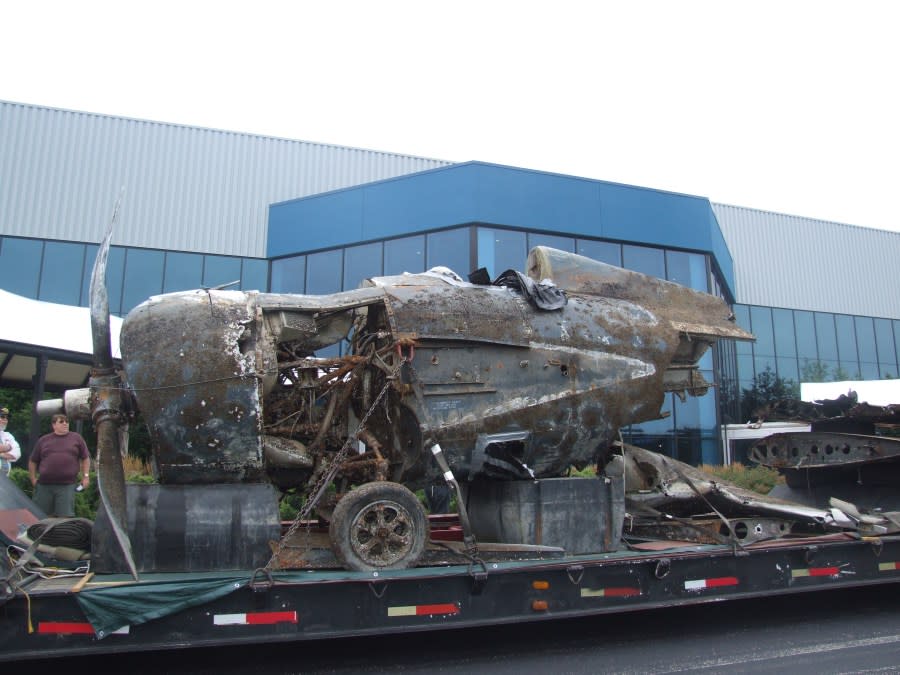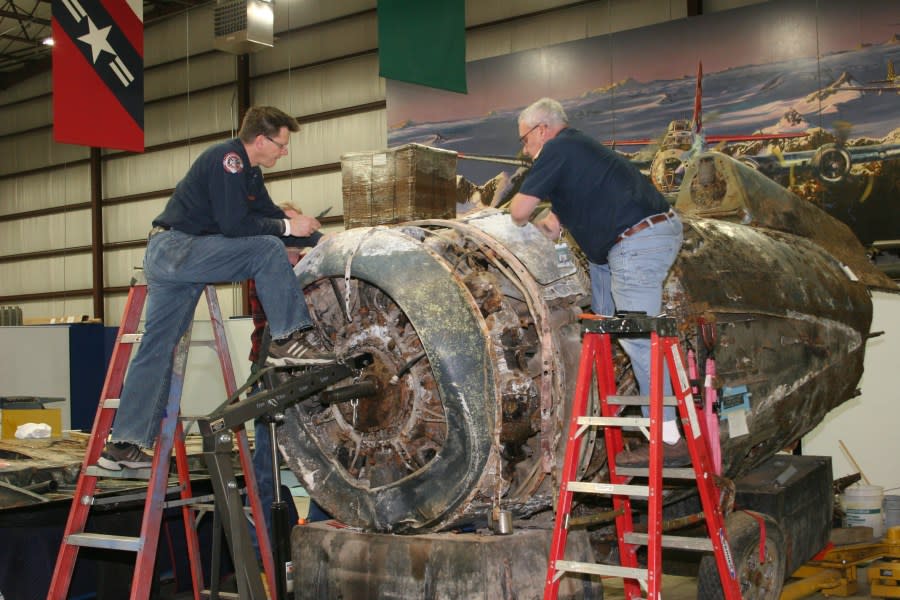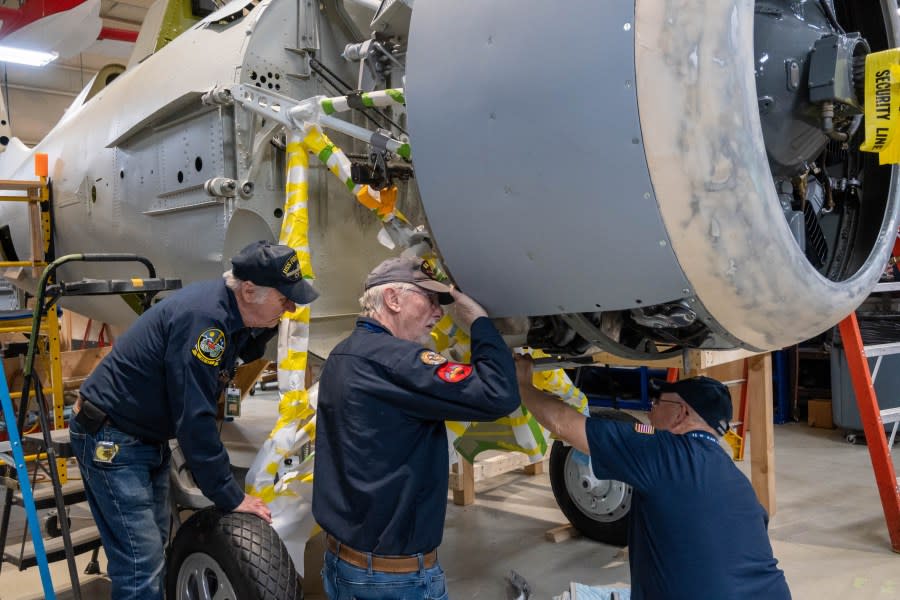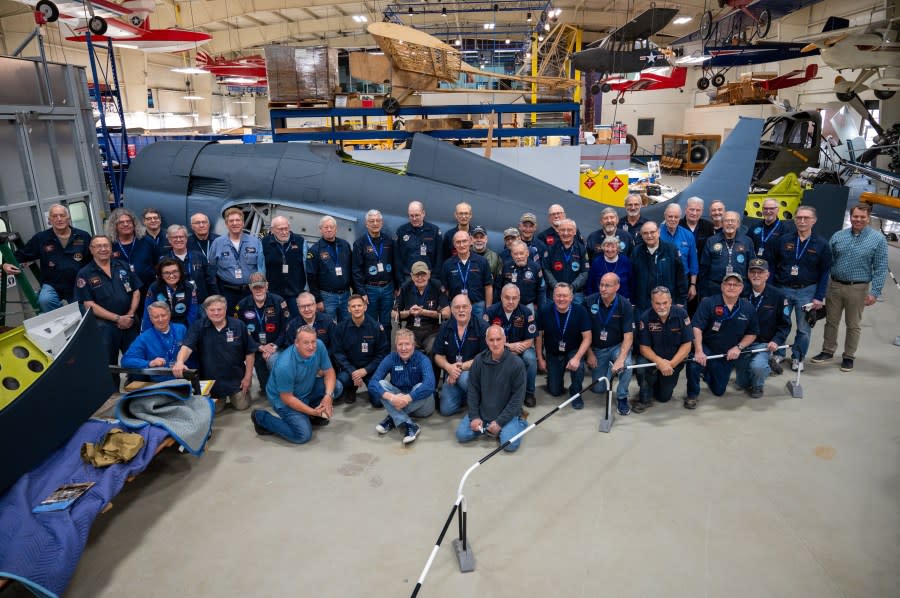After 68 years underwater, a WWII plane is back to its former glory
KALAMAZOO, Mich. (WOOD) — One FM-2 Wildcat fighter plane that currently resides at Air Zoo has seen better days.
The aircraft has spent the past nearly 80 years either at the bottom of Lake Michigan or in the museum’s workshop in Kalamazoo. But after all of this time, it’s nearly back to its former glory.
Air Zoo restoration workers and volunteers have spent more than a decade cleaning, rebuilding and replacing parts of the plane which cost an estimated $700,000. There has been an estimated 50,000 hours of work that has been put into the project since Air Zoo first took on the plane back in 2013.
“When I first saw this aircraft in Kenosha, Wisconsin, they rolled open this hanger door and I looked at that thing and my first response was I wanted to turn around and run the other way,” Air Zoo President and CEO Troy Thrash said. “I thought to myself, ‘This will never look like a plane again.’ But our team of restorers, they were like, ‘Dude, chill. We got this.’ And sure enough, we brought the project on and it’s just unbelievable now for me to look at this.”
The plane had been cut in half during a training mission on Lake Michigan on Dec. 18, 1944. The pilot was in the process of making their third straight landing on an aircraft carrier when their engine locked up and the Wildcat fell straight off the back of the ship into the water.
When it landed in Lake Michigan, the carrier’s rudder cut the plane in half. Thankfully, the pilot was able to escape before it sunk to the bottom of the lake where it stayed until Dec. 7, 2012.
The Wildcat in 2012. (Air Zoo) Volunteers work on the Wildcat. (Air Zoo) Volunteers work to restore the Wildcat. (Air Zoo) Volunteers work to restore the Wildcat. (Air Zoo) Volunteers work to restore the Wildcat. (Air Zoo)
Approximately 1,500 workers and volunteers have lent a helping hand in the restoration process over the years. It has been difficult due to the plane’s state at the time of recovery and the fact that there aren’t many manuals or guides on how to restore them. The crew said they had to use their wealth of knowledge on the plane and their experience to make it happen.
“We didn’t have the tooling. We didn’t have the processes that Grumman used to construct the airplane and some of the drawings were there and some of them weren’t so we had to create some things just literally from our imagination and experience,” Phil LaVoy, the restoration team lead, said.
All of that hard work has paid off as the aircraft is nearly completed. All that remains is some additional work on the cockpit and some other final details. The plane will then be sent to its new home at the American Heritage Museum in Hudson, Massachusetts.
The restoration team said they’re excited for this plane to move on and serve as a teaching tool for so many people.
“Back in the beginning this would have bothered me. It would have bothered me a great deal to see them go but it doesn’t bother me anymore you have to kind of divorce yourself of it when it’s finished and send it to a good home and know that we did a good job to preserve history,” Greg Ward, the restoration manager, said.
But before that happens, Air Zoo is allowing the public to check out the project this weekend. There is an open house at the museum this Saturday from 9 a.m. to 5 p.m. where you can see all of the hard work the restoration team has done. You will also be able to check out all of the history behind the plane and the restoration process.
Copyright 2024 Nexstar Media, Inc. All rights reserved. This material may not be published, broadcast, rewritten, or redistributed.
For the latest news, weather, sports, and streaming video, head to WOODTV.com.





